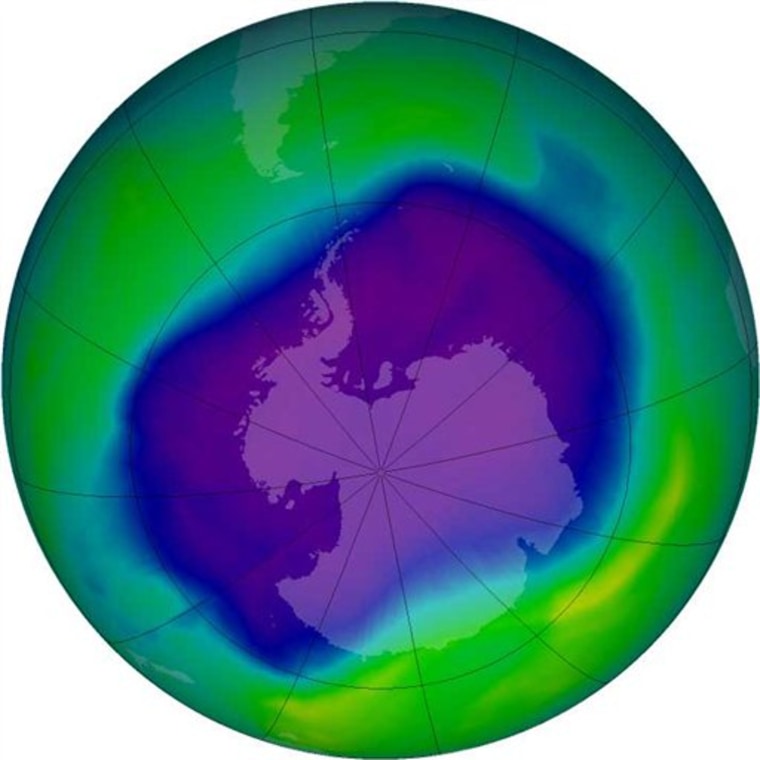Nations working to save the earth’s protective ozone layer agreed Friday to let the United States use thousands of tons of the pest-killing chemical methyl bromide. They modestly pared the Bush administration’s requested allotment of the powerful fumigant, which is banned for all but the most critical uses.
The members of the Montreal Protocol, meeting in New Delhi, India, spared the United States steeper cuts that were recommended by the treaty’s own technical panel. The decision applies to methyl bromide use for 2008 on American crops such as strawberries, peppers and tomatoes.
The United States sought approval for nearly 7,100 (6,415 metric tons) of methyl bromide. The nations settled on just over 5,900 tons (5,356 metric tons). Despite the existence of U.S. stockpiles far exceeding that amount, the treaty members said chemical companies can meet the need by manufacturing more than 5,000 tons (4,595 metric tons) of new methyl bromide, said Michael Williams, spokesman for the meeting. The stockpiles would be drawn down to meet the rest of the agreed-on use.
The United States and other countries signed the 1987 Montreal Protocol promising to end methyl bromide’s use in wealthy countries by 2005. Developing countries have a longer timeline to phase it out.
Failing to meet the deadline, the United States since has received annual exemptions allowing methyl bromide’s continued use on specific crops in California, Florida and other heavily agricultural states. Other nations have received far smaller exemptions.
Activist calls it 'bad news'
The New Delhi decision brought immediate criticism from a leading U.S. environmental advocate attending the session, who said there should be no new production, given the large stockpiles.
“This agreement is bad news for the ozone layer and bad news for our health,” said David Doniger, climate policy director of the Natural Resources Defense Council. He linked the decision to additional cancer and illness caused by radiation that comes through the hole in the ozone layer.
The Bush administration also had to overcome objections by some European allies who want a faster reduction in the fumigant’s use.
The U.S. position “is certainly undermining the spirit of the Montreal Protocol and setting a bad example for other countries, especially developing countries, and their aspirations to comply with the ban,” Swedish delegate Husamuddin Ahmadzai said before the decision.
This year marks the first time other nations working to curtail methyl bromide production have seen the size of the U.S. stockpile.
The administration says the inventory is needed to ease growers’ adjustment to the methyl bromide phase-out that was ordered 14 years ago. Importantly, they say, both stockpiles and production are steadily declining.
Each year when seeking so-called critical use exemptions, U.S. officials plead the case of American growers who mostly use the potent chemical to destroy pests before planting. The restrictions have pushed many farmers to switch to other pesticides, but the United States says the substitutes don’t work in all cases.
U.S. cites 75 percent reduction
The Bush administration says the stockpiles existed before the 2005 ban and thus are not subject to the same restrictions as newly produced methyl bromide.
“The U.S. position is that we are appropriately managing the strategic reserve,” said Drusilla Hufford, director of the Environmental Protection Agency’s stratospheric protection division. “We’ve drawn it down every year.”
She said the United States has spent $150 million on alternative pesticides and has achieved a 75 percent reduction from 1991 methyl bromide levels.
“There’s a lot going on but in order to continue the progress so you don’t have supply shocks or sudden unanticipated changes in the market, we found in the past that it is useful and helpful to the cause of ozone protection to have that reserve,” she said.
Environmental advocates say the stockpiles far surpass what is needed for a market cushion. They say the U.S. approach undercuts the goal of limiting methyl bromide because stockpiles can be used to meet demands that the treaty has rejected.
Former EPA Administrator William Reilly said the current U.S. stance, 14 years after methyl bromide was added to the treaty’s target list, undercuts world efforts to protect the Earth’s ozone.
“The point of the Montreal Protocol was to get us out of ozone depleters and provide a certain transition, with some small exemptions,” he said. “We provided for that, but a 14-year transition is a little hard to justify for mainline uses.”
The EPA in September disclosed that the methyl bromide inventory, owned by 35 companies, reached almost 11,000 tons at the beginning of this year, down from more than 18,000 tons two years earlier.
U.S. farmers are allowed nearly 8,900 tons this year under treaty exemptions, of which about 7,600 tons can be newly manufactured or imported. The rest would be drawn from stockpiles.
